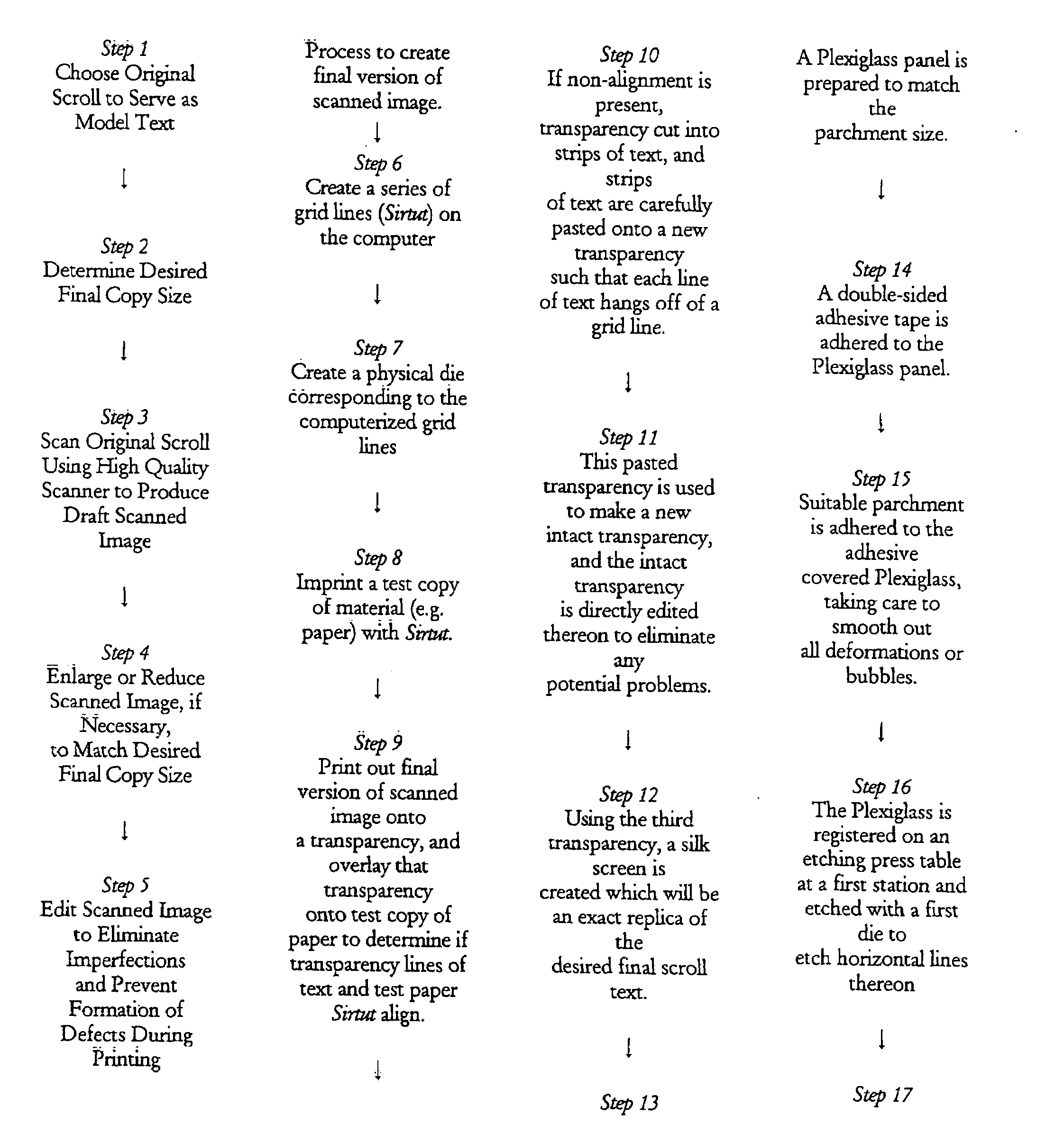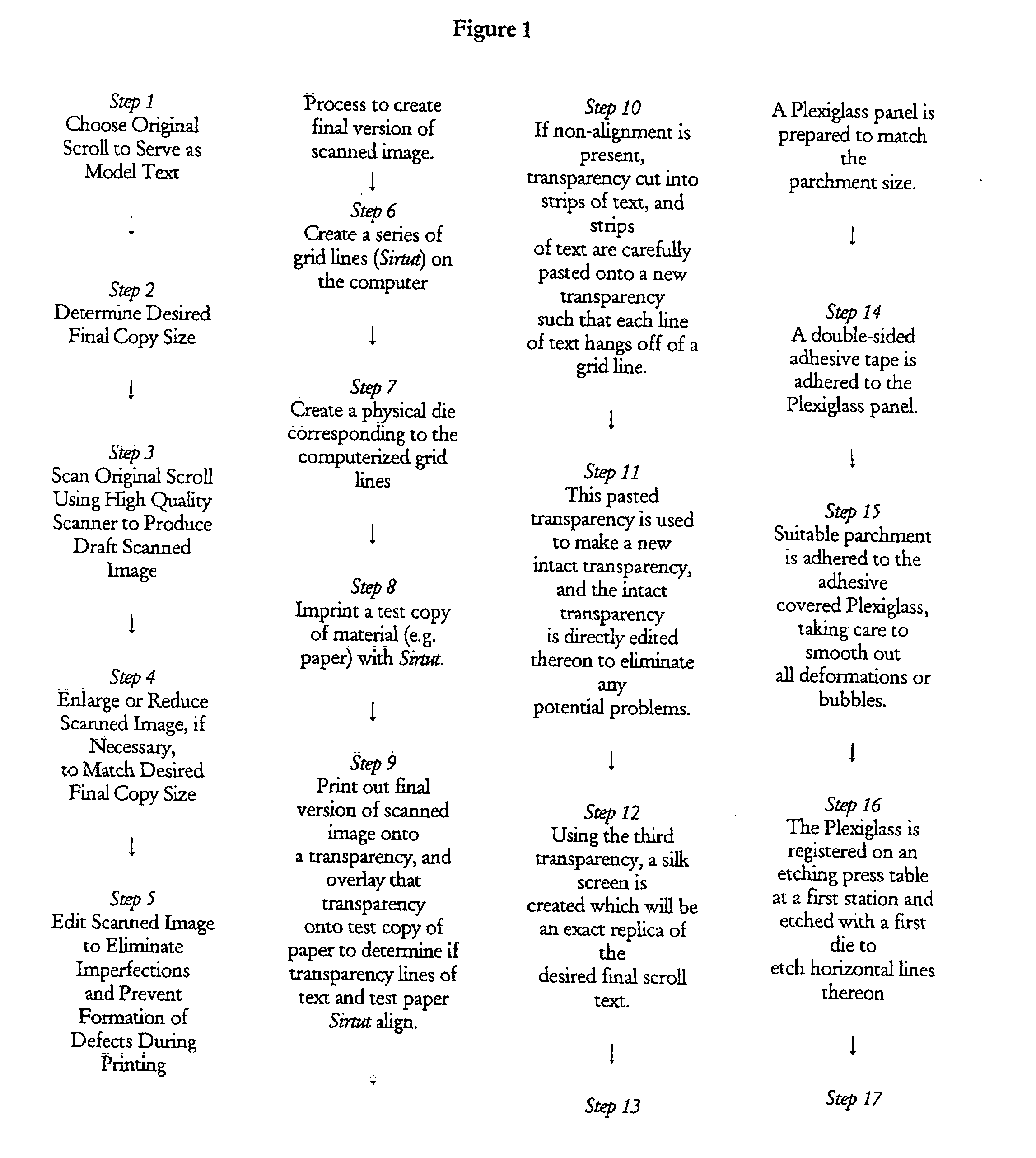Jewish Religious Scrolls
a scroll and scroll technology, applied in the field of jewish religious ceremonial objects, can solve the problems of long preparation time, high cost, and difficult to write text, and achieve the effect of a quick and inexpensive method of preparing and writing tex
- Summary
- Abstract
- Description
- Claims
- Application Information
AI Technical Summary
Benefits of technology
Problems solved by technology
Method used
Image
Examples
Embodiment Construction
[0056]In accordance with the present invention, a method is provided for preparing handwritten religious scrolls (namely Torah, Megillah, Mezzuzah and Tefillin scrolls), which can be prepared more quickly and inexpensively than traditional handwritten scrolls while yet fully comporting with all of the requirements of Jewish law. Further in accordance with the present invention, religious scrolls prepared in accordance with the method are provided.
[0057]The embodiments of the invention will first be described with reference to the Torah, the longest and therefore most expensive of the scrolls to be prepared. The remaining scrolls can be prepared in the same manner as a Torah scroll with any modifications necessary to comport with the particular requirements of such other scrolls, such as listed below.
[0058]In a first step of the present invention, it is necessary to begin the process by obtaining a high quality copy of the Torah or an accurate computer text file that has the correct ...
PUM
 Login to View More
Login to View More Abstract
Description
Claims
Application Information
 Login to View More
Login to View More - R&D
- Intellectual Property
- Life Sciences
- Materials
- Tech Scout
- Unparalleled Data Quality
- Higher Quality Content
- 60% Fewer Hallucinations
Browse by: Latest US Patents, China's latest patents, Technical Efficacy Thesaurus, Application Domain, Technology Topic, Popular Technical Reports.
© 2025 PatSnap. All rights reserved.Legal|Privacy policy|Modern Slavery Act Transparency Statement|Sitemap|About US| Contact US: help@patsnap.com



